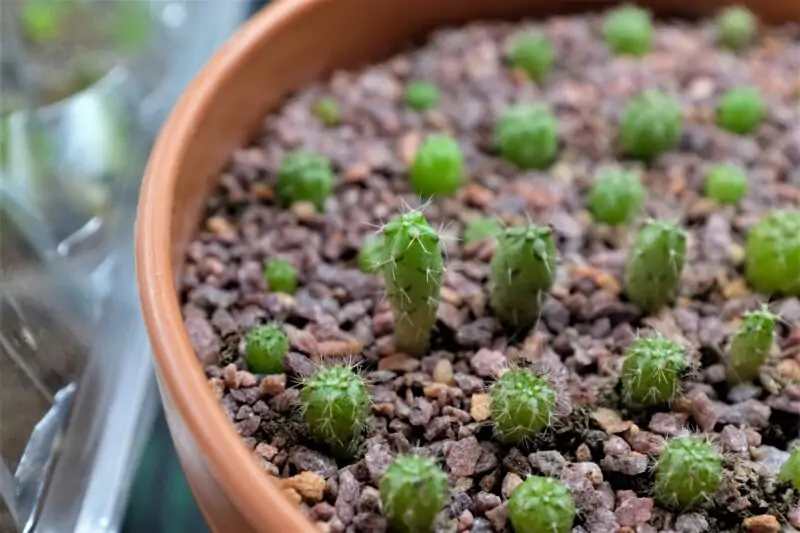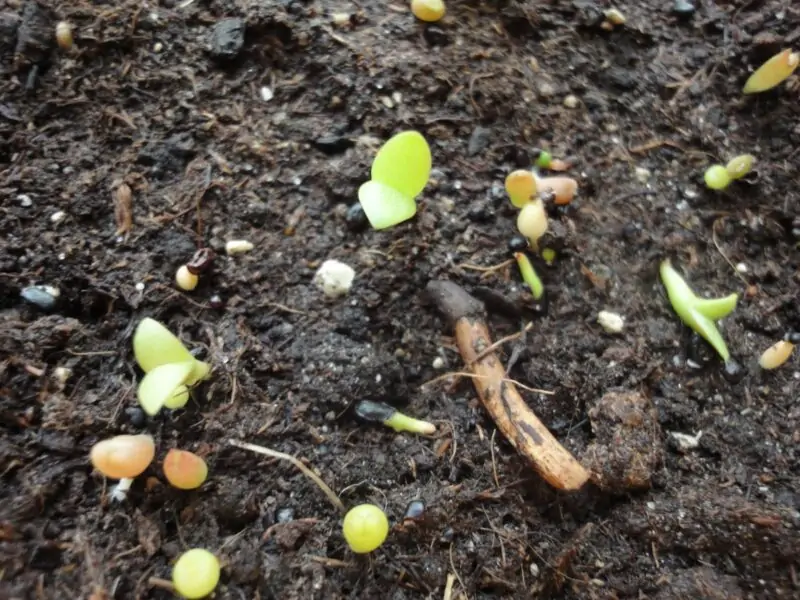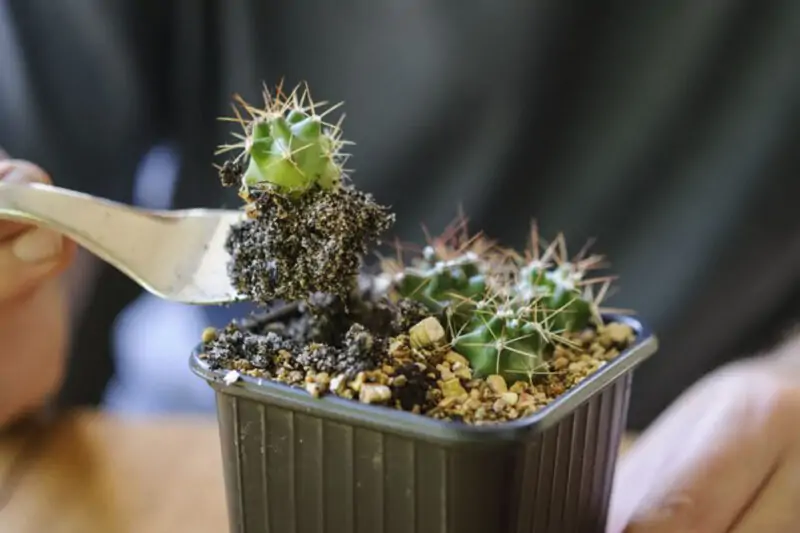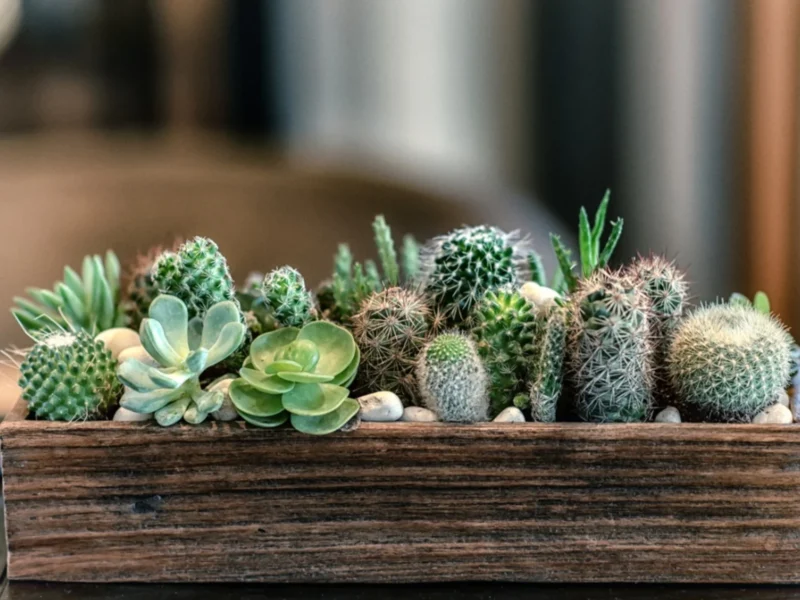Growing Cactus From Seed

Howdy there, friends! Today we’re going to talk about something that’s near and dear to my heart: cacti. These prickly plants may seem intimidating at first glance, but they can be surprisingly easy (and even fun!) to grow from seed. In this article, we’ll cover everything you need to know about growing cactus from seed – including how to acquire high-quality seeds, prepare them for planting, and care for your growing seedlings.
An Overview
Before we dive into the details of planting and caring for your cactus seeds, let’s take a quick overview of what the process entails.
First things first: you’ll need some good quality seeds. While it is possible to propagate new plants through cuttings or offsets (smaller “baby” versions of mature plants), starting with fresh seeds is often the most reliable method for consistent results. So, it’s time to sow the seeds and watch them sprout!
Once you have your hands on some viable seeds, it’s time to get them in soil where they can begin their journey towards becoming full-grown desert beauties. The key here is providing an environment that mimics their natural habitat as closely as possible – think plenty of light but also well-draining soil to prevent waterlogged roots. Moisten the soil, spread the seeds evenly across the surface, and cover them with a thin layer of soil.
Cacti grow slowly, so be patient as you wait for your seeds to germinate. In the meantime, make sure the young plants receive plenty of light and only water the soil when it dries out. Keep an eye on the cactus species you’re growing, as each type of cactus may have slightly different care requirements. Eventually, you’ll need to repot your cactus as it grows, but for now, just focus on helping them establish strong roots.
How To Acquire And Prepare Cactus Seeds
Now that we’ve covered why growing cacti from seed might be worth considering, let’s move onto sourcing those precious little guys!
Sourcing High-Quality Seeds
The best place to find quality seeds is at garden supply stores or nurseries specializing in selling succulent plant species (1). Some popular cactus types to grow from seeds include:
- Christmas cactus
- Desert cactus
- Prickly Pear cactus
- Barrel cactus
Online retailers are also a solid option, but make sure to research before making any purchases. Check the reviews from other buyers and buy seeds that are fresh and have a high germination rate.
Harvesting Seeds From Mature Plants
If you already have mature cacti in your garden, harvesting seeds can be an option as well! Here’s what you’ll need to do:
- Wait for flowers on your cactus plant (usually happens once per year).
- Once the flower has died back, it will begin producing seed pods. Let these dry out completely before removing them.
- Remove any debris or dust from within the pod by sieving it through a mesh strainer.
- Spread out the cleaned seeds evenly across some paper towels so they can fully dry before being planted into soil.
Selecting the Right Soil and Environment
Growing cacti from seed can be rewarding. But it needs careful considerations. One crucial factor is selecting the right soil and environment. In this section, we’ll discuss well-draining soil, indoor or outdoor germination, and sterilizing soil to prevent fungal issues.
The Importance of Well-Draining Soil
Cacti are desert plants that don’t need much water. Overwatering is a big mistake when caring for cacti or succulents! That’s why well-draining soil is essential for healthy cactus plants. Remember, cacti generally prefer longer periods of time between waterings.
When planting your seeds in pots, choose a potting mix for succulents and cacti. These mixes contain materials like perlite or sand. They improve drainage and retain moisture for the roots, while allowing light to reach the seeds for germination.
Indoor vs Outdoor Cactus Seed Germination
Deciding where to germinate your seeds depends on factors like weather and sunlight. Indoor environments offer stable temperatures. This promotes better success rates.
If you’re going with an indoor location, check for enough natural light near windowsills. You may not need grow lights if you place them near a south-facing windowsill.
Outdoor locations provide sun exposure and fresh air. But they need more attention and maintenance for optimal germination success.
Sterilizing Soil to Prevent Fungal Issues
Fungus is a cause of failed cactus growth from seedlings. Sterilizing your soil can prevent fungal issues before they start! Here’s how:
- Bake the soil in an oven at 180-200°F (82-93°C) until it reaches about 160°F (71°C).
- Microwave moistened soil in a microwave-safe container; heat on high power for five-minute intervals.
- Pour boiling water over the top layer and strain it through a sieve.
Now that we’ve covered selecting your environment and prepping your soil, let’s move onto planting those seeds successfully.
Steps to Successfully Grow Cactus from Seed
Growing cacti plants from scratch may seem intimidating, but don’t let fear hold you back! Follow these simple steps:
Step 1: Planting Cactus Seeds
When planting cactus seeds, don’t bury them too deep. Instead, lay them out evenly across the surface. Gently press them down, ensuring good contact with the potting mix.
Step 2: Germinating Cactus Seeds
Cacti seeds have a tough outer coating. Break it down by roughing it up with sandpaper or cutting an X into it. Then, soak the seeds in water until they swell.
Place the seeds on moistened potting mix and cover the container with a transparent lid or plastic wrap. Keep the soil damp but not too wet by misting it regularly.

Step 3: Providing Optimal Light Exposure
Cacti need plenty of direct sunlight. Be sure to provide enough light during all developmental stages. If growing indoors without enough natural light, consider purchasing full-spectrum LED lights.
Step 4: Monitoring and Caring for Cactus Seedlings
Once your seeds have germinated, remove the plastic wrap or lid. Make sure they get enough indirect sunlight. Be careful not to overwater. Water when the soil feels dry at about an inch down from the top.
Step 5: Pricking Out and Transplanting Cactus Seedlings

When the seedling has four leaves, gently separate each one. Next, place individual cacti into new pots filled with fresh potting mix and perlite.
Step 6: Post-Transplant Care and Recovery
After replanting, provide special attention to the young cacti. Avoid direct sun exposure during hot parts of the day. Mist them with clean water several times daily. Keeр them in a warm location with plenty of indirect sunlight. Water them frequently but carefully. Overwatering can still be an issue even after transplanting.
Keep an eye out for fungus development, especially if indoor conditions aren’t optimal. Reduced air circulation and cooler temperatures can encourage fungal growth. If you notice any signs of fungus, remove affected plant parts immediately. This prevents the fungus from spreading to other plants.
Common Challenges and Solutions
Growing cactus plants can be a fun project! Here are some common obstacles and solutions you may find helpful:
Dealing with Fungus and Other Pathogens
Fungal infections can harm young seedlings. To prevent this, make sure your soil has proper drainage. Add perlite and sterilize the soil mix before planting. This eliminates pathogens.
If you see fungal growth, remove infected areas. Clean the area thoroughly to stop the spread. Watch for other pathogens like bacterial rot and viral infection. Detect and treat them quickly.
Understanding Seed Disappearance and Prevention
Seeds might vanish due to pests. Birds or rodents may steal them. To deter pests, use mesh or cloth fencing around pots. Be cautious, as this might block airflow and cause diseases.
Caring for Different Cactus Varieties
Various species need different care. Some need more water, light, or pot size. For example, Christmas cacti need more water than desert varieties like saguaro. Cacti come in diverse shapes and sizes. Some prefer dry environments, while others need more humidity.
It’s important to research your cactus type and adjust your care routine. This helps ensure success, but sometimes it takes trial and error to find the perfect balance.
Frequently Asked Questions (FAQs)
Cactus seeds are great for growing unique plants for your home or garden. If you’re new to growing cacti, here are answers to common questions:
Germination time varies based on factors like temperature, soil moisture, and light exposure. Some species germinate within a week, while others take six months or longer! In general, it takes between one month and three years for most cactus seeds.
Growing cactus takes patience. But with proper care, your patience will be rewarded with healthy plants.
Growing your own cacti has benefits:
Cost: Buying mature plants can be pricey. Planting seeds saves money.
Variety: Planting seeds lets you choose unique species not found in stores.
Satisfaction & Enjoyment: Watching tiny seeds grow into mature plants is fulfilling!
Yes! Cacti and succulents often share similar growing conditions. They both love warm temperatures, sunlight, and well-draining soil.
However, not all succulents are compatible with cacti. Some need different soils or watering schedules. Research your plants before growing them together.

Conclusion
Growing cactus from seed is rewarding. It provides unique plants and saves money. Germination time depends on factors like temperature, water, and light. Planting seeds offers more variety than buying mature plants. Growing cacti plant from seeds is a fulfilling hobby, so give it a try today!